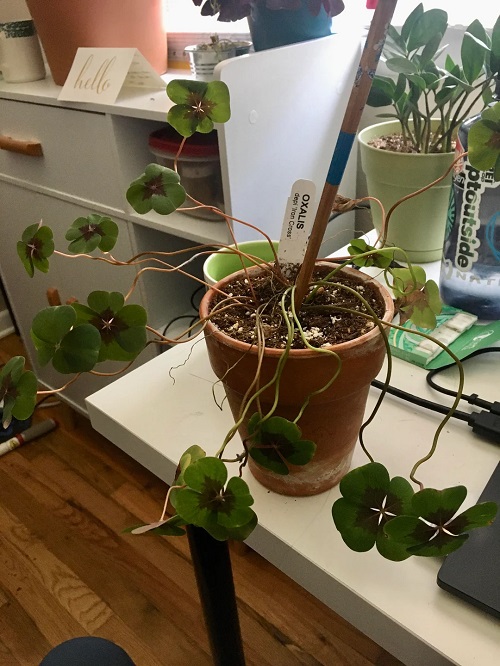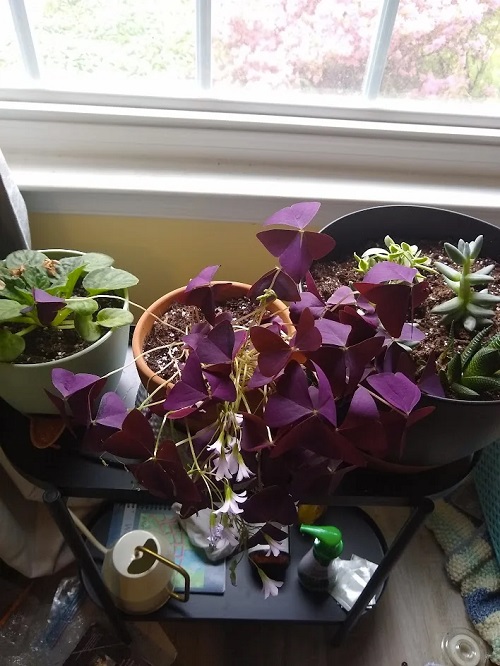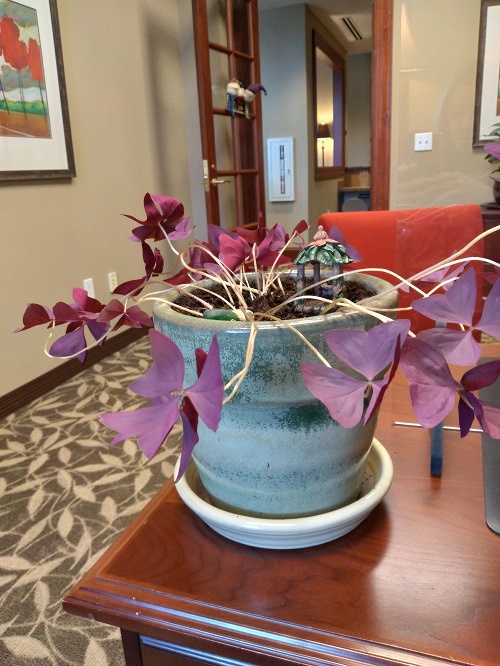Conerned about your Oxalis drooping? Learn the potential reasons and solutions to restore its perky, vibrant beauty with expert tips!

Caring for an oxalis plant can sometimes feel a bit tricky, especially when its once-lively leaves start to droop. But worry not! We’ve listed the most potential reasons and solution to deal this unpleasant condition!
Reasons and Solutions of Oxalis Drooping
1. Improper Watering

While overwatering is a curse to the entire houseplant kingdom, oxalis require a somewhat moist medium to thrive and don’t appreciate dryness at all. An overly dry medium can prevent the plant from accessing the water it needs to maintain its turgidity, resulting in a wilted, droopy appearance.
Solution
The best bet is to touch the medium every 3-4 days and check if it still feels a bit wet to touch. However, overwatering is never the solution. So, follow a deep watering schedule whenever the top layer feels, i.e., saturate the medium until the water drains out from the bottom.
2. Very Little or Too Much Sunlight Exposure

Oxalis performs best under bright, indirect light that simulates the dappled sunlight of its natural under-canopy habitat. Insufficient light causes the plant to etiolate, a process where it stretches toward the light source. This results in weak, elongated stems that lack the strength to support the foliage, causing the leaves to droop noticeably.
Again, too much sunlight paired with insufficient water can be a culprit, too, which could stress the plant, resulting in droopy leaves.
Solution
Place the plant near a window that receives ample indirect sunlight. If the spot is way too sunny, use a sheer curtain to diffuse direct sunlight. On the other hand, if natural light is insufficient, especially in winter, consider a grow light.
3. Nutrient Deficiency
Oxalis needs a well-balanced diet to function and grow properly. Nitrogen, in particular, is the food for leaf and stem development. A nitrogen deficiency leads to stunted growth and pale, weak leaves that lack the structural integrity to stand upright, causing them to droop or curl.
Solution:
Feed it with a balanced, water-soluble fertilizer every month during the warmer seasons. Dilute the feed to one-fourth strength to avoid chances of over-fertilizing that might do more harm than good.
4. Pest Infestation
Pests are gruesome any day and can leave your plant weak and droopy, ultimately stunting its growth. Especially, aphids, spider mites, and mealybugs pose significant threats by feeding on the sap from the leaves and stems.
This sap contains vital nutrients and water necessary for the plant’s health. As these pests drain the sap, they weaken the plant’s structure, disrupt photosynthesis, and can introduce diseases, all contributing to the drooping and discoloration of leaves.
Solution
Regularly inspect your plants for these pests. If an infestation occurs, isolate the affected plant to prevent spread and treat it with an appropriate organic insecticide like neem oil or insecticidal soap. Mix 3-5 drops of neem oil in a liter of water with a tablespoon of dishwashing liquid and spray it on the affected spots, such as the undersides of the foliage and near the petiole.
5. Temperature Stress
Oxalis is sensitive to temperature changes, especially those above the window of 65-75 F or 16-24 C which can create stress and lead to drooping leaves. High temperatures can cause the plant to lose moisture rapidly, leaving it dehydrated and wilted. Conversely, exposure to cold drafts or temperatures below 50 F or 10 C can shock the plant’s system, especially if it is accustomed to a warmer environment, resulting in a similar drooping appearance.
Solution
To ensure its good health, maintain it in a room with consistent, moderate temperatures. Avoid placing the plant near windows that might be drafty during colder months or directly under air conditioners or near heat sources, which can dry out the plant. A stable environment will help maintain its vigor and appearance.
6. Natural Dormancy Period

Like many perennial plants, Oxalis goes through a natural dormancy period, typically signaled by drooping leaves and a general decline in its vibrant appearance. During dormancy, the plant conserves energy by dropping leaves and reducing growth. This period of rest is a normal part of its growth cycle and essential for its long-term health.
Solution
When you notice your Oxalis beginning to droop and shed leaves as it enters dormancy, reduce watering significantly, allowing the soil to dry out more than usual. Move the plant to a cooler, darker area to simulate the natural conditions it would experience in winter. Avoid the urge to “revive” it with extra water or fertilizer.
After a few months of rest, gradually reintroduce the plant to more light and resume regular watering to encourage new growth as it exits dormancy.






